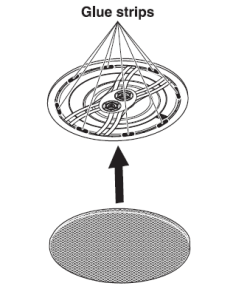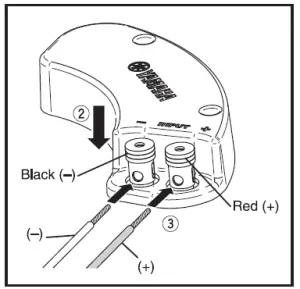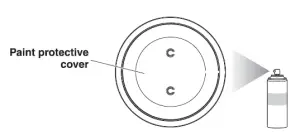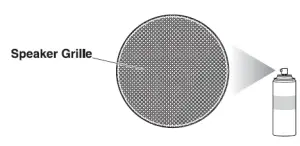YAMAHA In-Celling Speaker NS-IW280C Owner’s Manual
CONSUMER PRECAUTIONS
- Before you begin installation, read this owner’s manual and consult your local building codes. If you have any doubt, contact your dealer or a qualified audio/video installer.
- YAMAHA recommends installing the speaker only in two-by-four wood frame or similar construction. The instructions provided in this owner’s manual are intended specifically for this type of wall construction.
- When installing your NS-IW360C in-ceiling speakers, be aware of the product weight (See specification page) and the sturdiness of the material into which you are installing the speaker.
- Be aware of any concealed studs, electrical wiring or plumbing in the wall or ceiling into which you are installing the speakers. If you are not sure of a safe way to install these speakers, consult a professional installer or a building contractor.
- Never touch the woofer or tweeter with your hands or expose it to excessive physical shock. If they are dented or bent, the sound will be distorted.
- Lower the power amplifier/receiver volume control before changing input sources. Never change input sources (for example, FM to CD) at high listening levels. Always turn the receiver/amplifier unit off when installing or removing any cables.
- Anytime you note distortion, reduce the volume control on your power amplifier/receiver to a lower setting. Never allow your power amplifier to be driven into “clipping.”
- Secure placement or installation is the owner’s responsibility. YAMAHA shall not be liable for any accident caused by improper placement or installation of speakers.
WARNING:
Installation shall be in accordance with the applicable section of the National Electrical Code, ANSI/NFPA 70, and/or the National Fire Alarm Code, ANSI/NFPA 72, as applicable. The wiring method and compartment shall be such as not to interfere with the operation of the speaker.
UNPACKING
After unpacking, check that the following items are contained.
TOOLS NEEDED

SPEAKER PLACEMENT
- StereoFor best stereo performance, install the left and right speakers at equal distance from the listening position. Each speaker should be separated by a distance of 6-10 ft.

- Home Theater Use these speakers for left and right surround or height channels. Surround speakers should ideally be placed behind the listening area, at least as far apart as the front speakers and up to 2 additional feet apart per side.

INSTALLATION
Before installation, check to ensure that the area you are installing the speaker is free of any ceiling joints, either by tapping the ceiling or using a stud finder. If you wish to paint the speaker frame and grille, please refer to page 7 (“PAINTING THE SPEAKER FRAME AND GRILLE”) before proceeding.
- Position the cutout template where you are installing the speaker. Then trace around the template with a pencil.

- Drill a pilot hole in the center outline you traced.

- Insert the bent coat hanger wire into the hole. Then slowly rotate to check for any obstruction. If there is any obstruction, patch the hole and select another location.

- Cut the ceiling along the outline you traced.

- Run high quality speaker cable from your receiver to your speakers. Leave a few extra feet of cable.
 Note: You can insulate the cavity by placing a sheet of fiberglass insulation around the speaker components to improve speaker performance.
Note: You can insulate the cavity by placing a sheet of fiberglass insulation around the speaker components to improve speaker performance.
- Connect the speaker cable to the speaker and your receiver. Please refer to page 6 (“CONNECTIONS” section) for detailed instructions.

- Place the speaker into the ceiling

- Tighten each of the four screws evenly until the clamps at the back of the frame grip the ceiling to secure the speaker. DO NOT OVERTIGHTEN
 Note: You can swivel the tweeter to direct high frequency sounds precisely toward the listening position by gently pressing the outer edge of the tweeter mount
Note: You can swivel the tweeter to direct high frequency sounds precisely toward the listening position by gently pressing the outer edge of the tweeter mount
- Attach the grille to the frame

Note: For permanent grille attachment, application of the supplied glue strips is recommended. Recommended Glue Strip Location
CONNECTIONS
- Connect the screw-type input terminals at the rear of the speakers to the speaker output terminals of the receiver.
- Connect the(+) terminals on the receiver and speakers using the corresponding side of the cable. Connect the (-) terminals on both components using the other side of the cable.

Notes:
- Make sure that the bare wires are not touching each other as this could damage the speaker and receiver.
- Connect one speaker to the left terminals of your receiver, and another speaker to the right terminals, making sure not to reverse the polarity(+,-). If one speaker is connected with reversed polarity, the sound will be unnatural and lack bass.
How to connect
- (1) CD Loosen the knob.
- (2) Insert the bare wire. Remove the insulation coating at the end of each speaker cable by twisting the coating off.
- (3) Tighten the knob and secure the cable. Test the connection by pulling lightly on the cable at the terminal.

When using a banana plug
- Tighten the terminal knob.
- Insert the banana plug into the terminal.

PAINTING THE SPEAKER FRAME AND GRILLE
The speaker frame and grille can be painted to match your room décor. Use high quality spray paint and select a well-ventilated area before proceeding.
Painting the frame
- Remove the speaker from the ceiling if it is already installed. Also, remove the grille from the baffle.
- Mask the speaker components and the baffle with the supplied paint protective cover.
- Apply the paint to the frame.

Painting the grille
- Carefully remove the grille from the speaker, if attached.
- Apply the paint to the grille. Make sure that the grille holes remain free of paint. Clogging the holes with paint may diminish the sound quality.

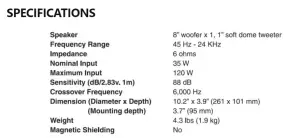
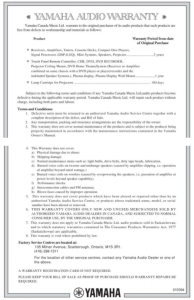
Read More About This Manual & Download PDF:
[xyz-ips snippet=”download-snippet”]

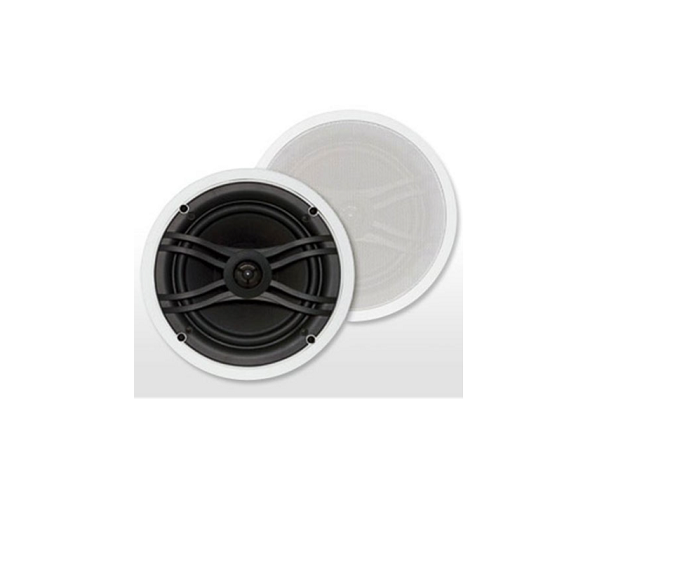



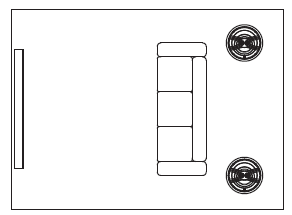
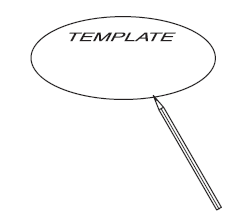
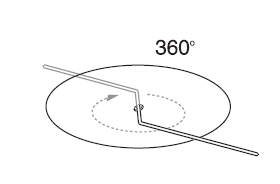
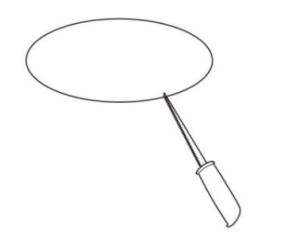
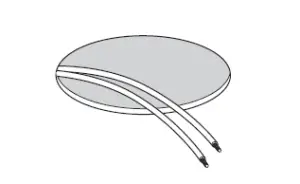 Note: You can insulate the cavity by placing a sheet of fiberglass insulation around the speaker components to improve speaker performance.
Note: You can insulate the cavity by placing a sheet of fiberglass insulation around the speaker components to improve speaker performance.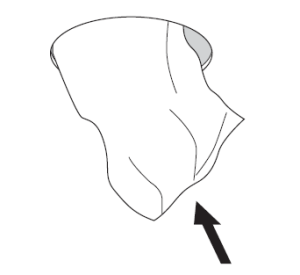

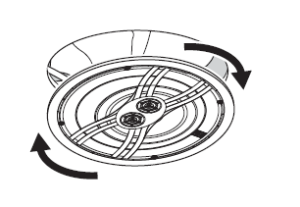
 Note: You can swivel the tweeter to direct high frequency sounds precisely toward the listening position by gently pressing the outer edge of the tweeter mount
Note: You can swivel the tweeter to direct high frequency sounds precisely toward the listening position by gently pressing the outer edge of the tweeter mount
